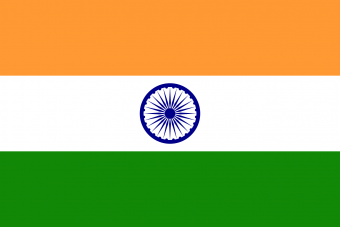| Market Executive Summary |
API (Active Pharmaceutical Ingredient / Bulk Drug) Traceability:
India has issued requirements for the identification of pharmaceutical drugs (bulk drug/API only for now) using a QR code for traceability of drugs in the domestic market. Details of what must be encoded within the QR code include identification requirements as listed:
- Unique product identification code, name of the API, brand name, name and address of manufacturer, batch number, batch size, date of manufacturing, date of expiry or retesting
- Serial shipping container code, manufacturing license number or import license number
- Special storage conditions required if any
Even though the law states that a barcode is required at “at each level packaging that store data or information readable with software application to facilitate tracking and tracing”, it is understood that serialisation and/or a barcode is/are NOT at present required at the sales item level but only at shipper case and at pallet level.
There is no reporting of this data to any central system/database and there is no requirement for manufacturers, distributors or other supply chain partners to store this information in a database of their own.
Industry have expressed concerns on a number of points:
- The data carrier would not be a GS1 data matrix but a QR code; this means that there are no firm specifications for some of the date elements which will lead to misinterpretation and confusion, for example a date of “100322” may be interpreted in different formats by different service providers i.e. MMDDYY, DDMMYY or YYMMDD
- The correct SSCC code may actually not be available at the time of printing as it may be generated later by the shipping company and (in the current process) be applied as part of a separate shipping label
- Special storage conditions may also be dependent on the mode of transport / shipping and that information may also not be available at the time of printing
The requirements have now been changed:
- Compliance deadline extended to 1st May 2023
- Some data elements have been dropped: batch size, SSCC, storage condition
- The name of API has been changed to the “proper and generic name of the drug”
However, the issues regarding date format, how to encode the “name and address of the manufacturer” etc. remain, including the issues around the size of the QR code and how that would fit on primary and secondary pack labels.
Traceability / barcode rules for the top 300 brands for the domestic market
In October 2022, the MOH issued requirements for barcoding for the top 300 brands on the domestic market.
Similar to the API requirement, the application of a bar code (QR or 2D DataMatrix) is required, carrying information about the product “on its primary packaging label or, in case of inadequate space in primary package label, on the secondary package label that store data or information legible with software application to facilitate authentication.”
- Unique product identification code
- Proper and generic name of the drug
- Brand name
- Name and address of the manufacturer
- Batch number
- Date of manufacturing
- Date of expiry
- Manufacturing license number
This requirement raises similar issues to the API requirement, i.e. standard for the encoding of the data, space (especially given the requirement to apply the barcode to primary packs) and the current status is that industry is seeking urgent clarification.
|
